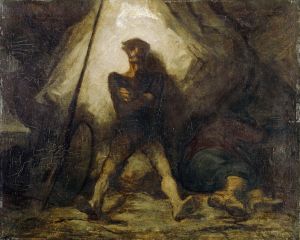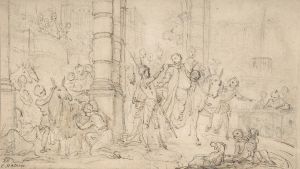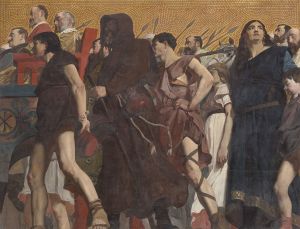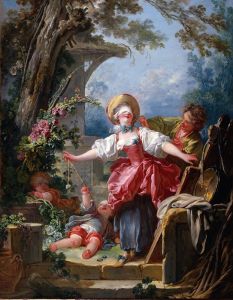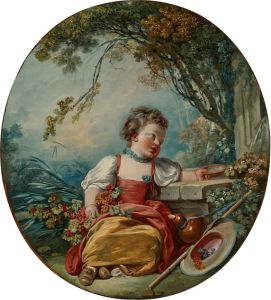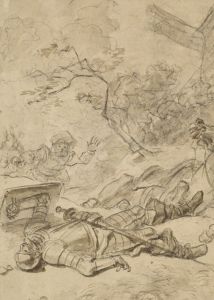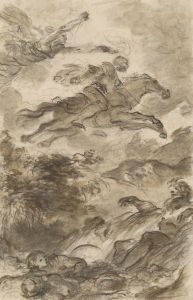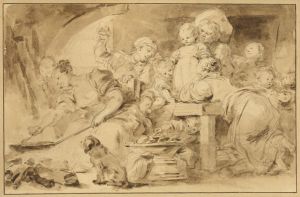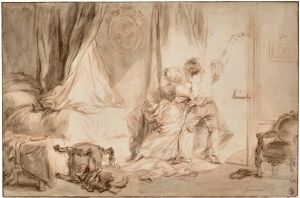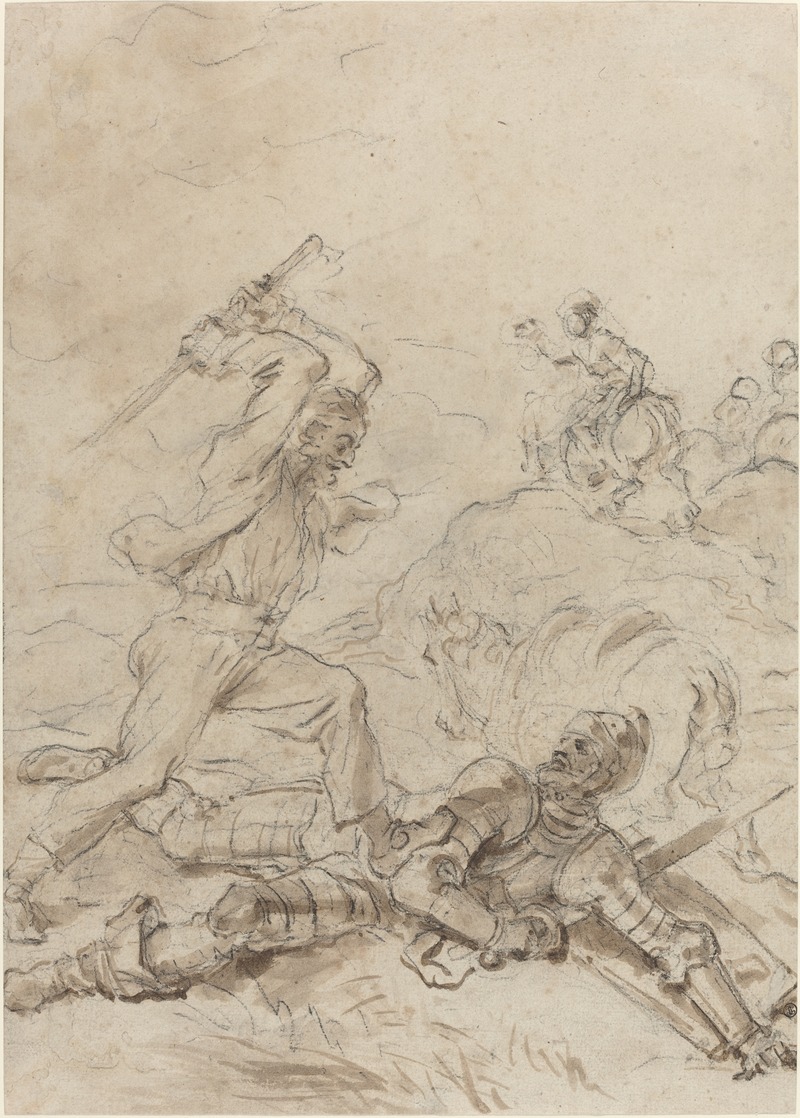
The Muleteer Attacking Don Quixote as He Lies Helpless on the Ground
A hand-painted replica of Jean-Honoré Fragonard’s masterpiece The Muleteer Attacking Don Quixote as He Lies Helpless on the Ground, meticulously crafted by professional artists to capture the true essence of the original. Each piece is created with museum-quality canvas and rare mineral pigments, carefully painted by experienced artists with delicate brushstrokes and rich, layered colors to perfectly recreate the texture of the original artwork. Unlike machine-printed reproductions, this hand-painted version brings the painting to life, infused with the artist’s emotions and skill in every stroke. Whether for personal collection or home decoration, it instantly elevates the artistic atmosphere of any space.
Jean-Honoré Fragonard, a prominent French painter of the Rococo era, is known for his exuberant and fluid style, often depicting scenes of romance, frivolity, and playful eroticism. Among his diverse body of work is the painting "The Muleteer Attacking Don Quixote as He Lies Helpless on the Ground." This artwork is part of Fragonard's exploration of literary themes, specifically drawing inspiration from Miguel de Cervantes' seminal novel "Don Quixote."
"Don Quixote," published in two parts in 1605 and 1615, is a cornerstone of Western literature. It tells the story of a nobleman, Alonso Quixano, who becomes so enamored with tales of chivalry that he decides to become a knight-errant, adopting the name Don Quixote. Accompanied by his loyal squire, Sancho Panza, Don Quixote embarks on a series of misadventures, often mistaking mundane objects and situations for grandiose challenges.
Fragonard's painting captures a moment of vulnerability and comic misfortune for the titular character. In the scene, Don Quixote is depicted lying helpless on the ground, having been attacked by a muleteer. This incident is emblematic of the many beatings and humiliations Don Quixote suffers throughout his adventures, often due to his delusions and the harsh reality that contrasts with his chivalric ideals.
The composition of the painting reflects Fragonard's mastery of movement and emotion. The dynamic poses of the figures convey a sense of action and immediacy, while the expressions capture the drama and absurdity of the moment. Fragonard's use of light and shadow enhances the scene's intensity, drawing the viewer's eye to the central figures and emphasizing the contrast between Don Quixote's idealism and the brute force of the muleteer.
Fragonard's choice to depict this particular scene from "Don Quixote" aligns with the Rococo interest in humor and satire. The novel itself is a satirical take on the romantic notions of knighthood and chivalry, and Fragonard's interpretation highlights the comedic elements of Cervantes' work. By focusing on a moment of defeat for Don Quixote, Fragonard underscores the folly of his protagonist's quest and the inevitable clash between fantasy and reality.
The painting also reflects the broader cultural context of the 18th century, a time when Enlightenment ideas were challenging traditional narratives and encouraging a more critical view of established norms. Fragonard's work, while rooted in the Rococo's decorative and playful style, often contains an undercurrent of critique, inviting viewers to question the values and assumptions of their society.
In summary, "The Muleteer Attacking Don Quixote as He Lies Helpless on the Ground" by Jean-Honoré Fragonard is a vivid and engaging interpretation of a classic literary moment. Through his skillful use of composition, light, and expression, Fragonard brings to life the humor and pathos of Cervantes' tale, offering a visual commentary on the enduring themes of illusion, reality, and the human condition.





